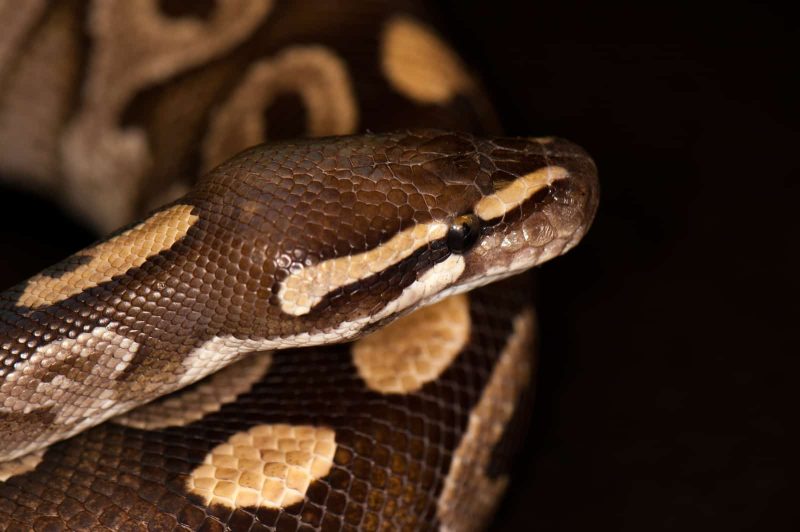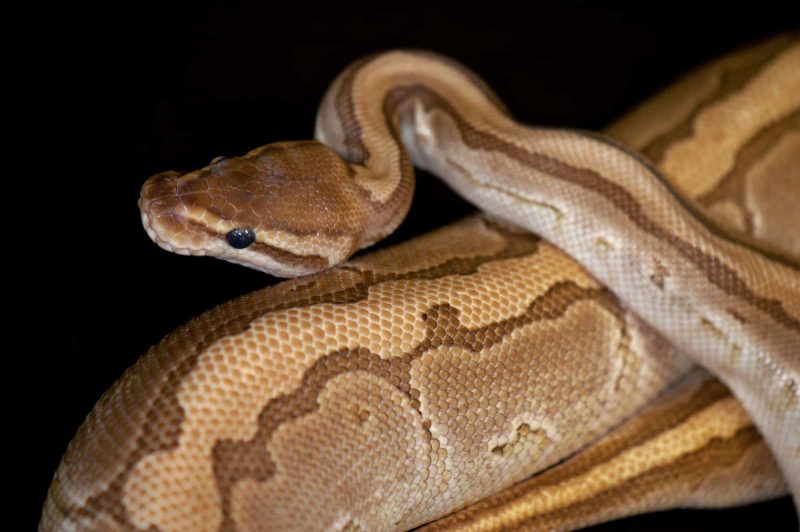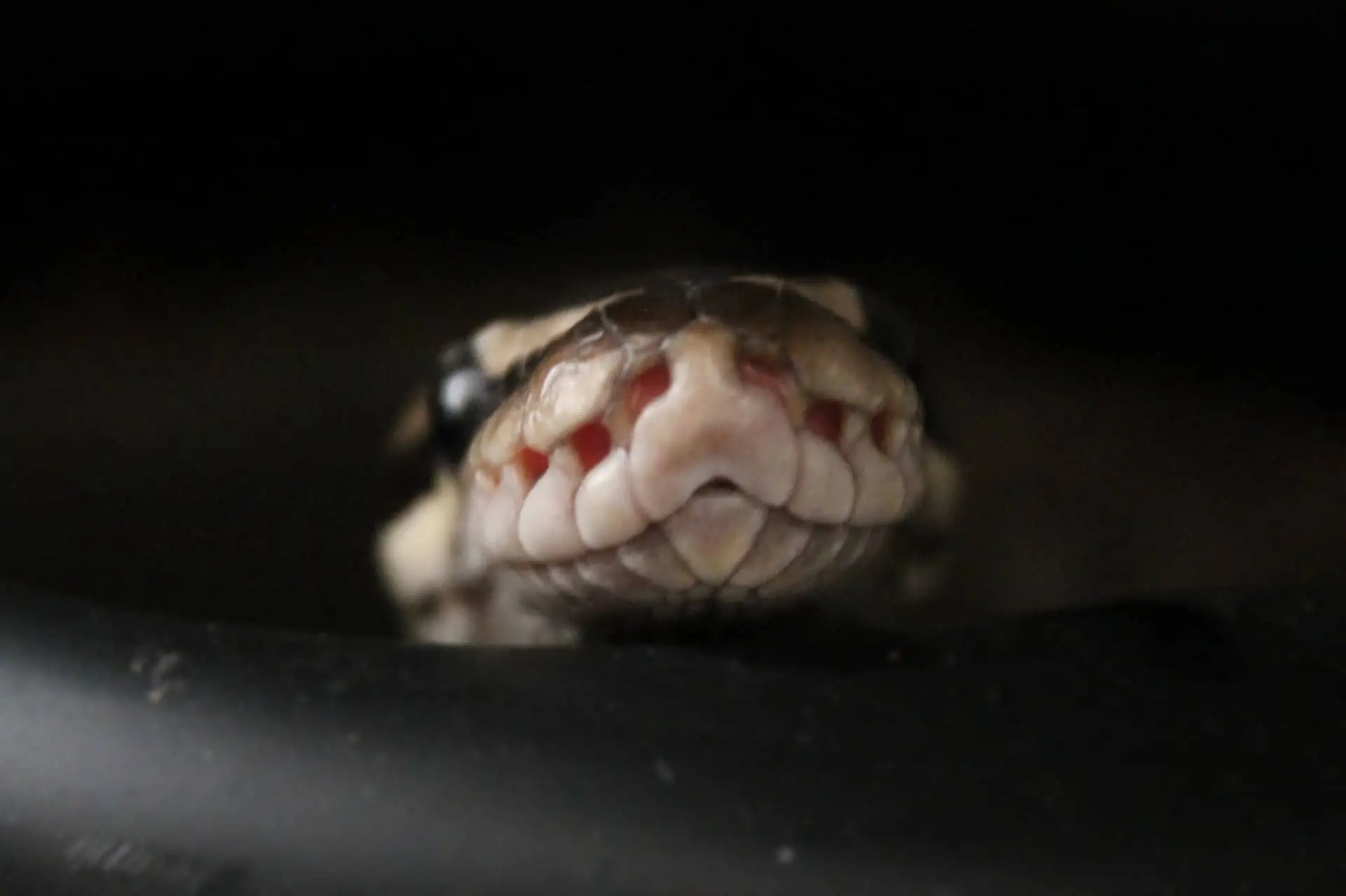As a responsible reptile owner, it is of utmost importance to be conscious of when your slithery companion is suffering from respiratory complications. Normal respiration in ball pythons is typically very quiet and barely audible. During periods of rest, snakes may not appear to be breathing at all as the process occurs so slowly and quietly. In more active moments, respiration will become more visible, with the snake’s nostrils flaring as it takes in air and the underside of the belly briefly rising and falling.
But if your pet starts to discharge excessively from the mouth or nose, breathing heavily along with a wheezing or gurgling sound, they are likely suffering from a respiratory infection.
Respiratory infections are caused by a variety of factors, with the most common stemming from:
- Incorrect temperature and humidity level
- Unhealthy hygiene & sanitation practices
- Poor diet and nutrition
- Inadequate ventilation
- Contaminated water supply
- Exposure to other ill snakes
- Stress
To better understand the root causes of this disease, we will delve further into each of these contributory factors and provide advice on how to prevent it.
Ball Python Respiratory Infection
Respiratory infection is a common health issue with Ball Pythons. These infections occur when bacteria, fungi, or viruses (Nidoviruses) become trapped in the lungs, causing inflammation and difficulty breathing. It is due to the anatomy of their lungs, consisting of two small, smooth-walled sacs on either side of the snake’s body.
- These small sacs lack any protective mucus layer, making them more susceptible to infection from airborne pathogens.
- Ball Pythons have a weaker immune system than other reptile species, which also makes them more vulnerable to respiratory infections.
What Are the Causes of Respiratory Infection in Ball Pythons?
Ball pythons are susceptible to respiratory infections due to their sensitive nature and common stressors. The following are potential reasons a ball python could get a respiratory infection.
Incorrect Temperature and Humidity Level
If you have been keeping your ball python in an environment that is too cold (below 68 degrees Fahrenheit) or only giving it heat for a few hours per day, it can result in hypothermia. It can lead to an increased risk of respiratory infections.
Similarly, when humidity levels are too high, the air is saturated with moisture and bacteria, which increases the chance of infection.
Further Reading: Ball Python Temperature & Humidity Needs
Unhealthy Hygiene & Sanitation Practices
Unhealthy hygiene and sanitation practices have serious consequences and can lead to the accumulation of mold, mildew, and mites in the python’s environment, which can cause respiratory infections.
Poor Diet and Nutrition
Poor diet and nutrition can cause a plethora of health problems for ball pythons. Without the right balance of vitamins and minerals, their immune system is weakened, making them more prone to respiratory infections, parasites, and other illnesses.
Inadequate Ventilation
Poor ventilation can cause the air in a terrarium to become stagnant, which allows bacteria and fungi to thrive. It can lead to an increased risk of infection, as the organisms in the air may gain access to the snake’s respiratory system.
In addition, the oxygen levels in stagnant air can become depleted, making it harder for the snake to breathe, and causing other health problems.
Contaminated Water Supply
Contaminated water contains pathogens and also pollutants, such as heavy metals and pesticides, that can indirectly weaken the immune system and increase the snake’s susceptibility to infection.
Exposure to Other Ill Snakes
Snake respiratory infection is a highly contagious and potentially deadly disease that can spread quickly between snakes of different species. When ball pythons are exposed to other ill snakes, they, too, can cause respiratory infection.
Stress
When a ball python is exposed to an array of stressors such as overcrowding, handling the snake too often, or noisy environments, it can weaken the immune system and make them more liable to infection.
What Are the Signs of Respiratory Infection in Ball Pythons?
When it comes to the health of your beloved snake. Fast and accurate identification of symptoms may be exactly what saves your beloved pet’s life. So watch for the following warning signs of respiratory distress:
- Labored breathing with gasping for air
- Open-mouth breathing
- Wheezing and gurgling noise when breathing
- Lethargy
- Lack of appetite and weight loss
- Swelling of the lower jaw, throat, or sides of the neck
- Excess mucus present in and around the mouth area
- Discharge from the nose and/or mouth
The initial indications of respiratory infection may take days or even weeks before becoming apparent, and some signs are very severe – a warning that your companion is dying.
Further Reading: How to Tell if My Ball Python Is Dying?
Similar Symptoms to a Respiratory Infection
It is important to note that a respiratory infection may present itself with symptoms similar to other illnesses and health conditions.
If there is no evidence of a respiratory ailment, then the excessive salivation may be an indication of an undiagnosed medical condition such as:
- Some ball python owners have noticed that their beloved pets begin to salivate in greater quantities when they’ve had enough handling.
- It is quite common for pythons to regurgitate their meal if they are held too soon after eating, increasing saliva production.
- If your pet experiences gagging or choking on food or any foreign object, it’s typical for them to produce a higher amount of saliva that may present as discharge.
- In some cases, tumors in the respiratory tract can also increase salivation.
- At times, environmental irritants can also cause nasal discharge in snakes.
The more you get to know your pet, the easier it will be for you to decide if they simply need a break from handling or if there’s something else going on.
How Do You Treat a Respiratory Infection?
Respiratory infections, if left untreated, can result in severe illness – the bacteria could spread to your pet’s bloodstream, leading to septicemia, which can be deadly.
I strictly advise you to see your vet – they can help you determine the best course of action for treatment and provide medications.
- To identify the source of your pet’s infection, your veterinarian may propose X-rays, blood tests, and nasal or oral discharge analyses.
- In case of bacterial infection, your vet will prescribe antibiotics that can be given orally, injected directly, or inhaled to combat bacterial ailments. On the other hand, to treat viral infections vaccine is administered to reduce inflammation and clear the infection.
- If parasites or mites cause the infection, your vet will provide you with special medications, such as anthelminthic drugs, to treat it and suggest a deep cleaning of the enclosure using disinfectants in order to get rid of any remaining mites.
- Hospitalization is often necessary for seriously ill snakes, which is usually followed by lung wash, fluid therapy, and force-feeding.
Regular vet check-ups will help identify any early signs of infection so they can be treated promptly.
How Long Does It Take for a Respiratory Infection To Go Away?
The length of time it takes for a ball python respiratory infection to go away can vary greatly depending on the severity and type of infection.
Mild Cases: Treatment with the proper medication can resolve the mild infection within 10-14 days.
Chronic Cases: If the infection is severe or has become chronic, it may take up to 4-6 weeks (or longer) before signs of improvement are seen.
In Case of Re-Infection: Additionally, the duration of treatment may extend in case of re-infection or the ball python has not responded well to antibiotics.
It is important to follow your veterinarian’s instructions to ensure the best outcome for your pet.
Note: Most ball python respiratory infections can be successfully treated if attended to early. However, the longer they go untreated, the more likely they are to become serious and even fatal.
Tips To Keep Your Ball Python Healthy
In order to prevent the occurrence of respiratory infections, it’s important to maintain your ball python in its ideal living conditions.
To keep your ball python safe from infection, I highly recommend you adhere to the following fundamental principles.
1. Spacious Habitat
Provide your ball python with a clean and adequately sized habitat. Ball pythons need plenty of space to move around and exercise, which can help them ward off respiratory infections.
Further Reading: The Ball Python Habitat
2. Keep the Enclosure Clean
Ensure that the substrate, hiding spots, and furnishings are free of fecal matter and other debris that can harbor bacteria or fungi. It will help discourage any respiratory infections from developing in your snake’s environment.
3. Regulate Temperature & Humidity Level
Provide a temperature gradient in your ball python’s enclosure by keeping one end of the habitat on the warm side and the other on the cooler side. Maintain the warmest temperatures around 95 degrees Fahrenheit and cooler temperatures in the low- to mid-70s Fahrenheit. Regulate the humidity level between 50 to 60%.
4. Provide Adequate Ventilation
Make sure that your ball python has access to plenty of fresh air circulation in its enclosure. I suggest you use fans or air vents to help circulate air and discourage the growth of bacteria.
5. Avoid Overcrowding
It is not recommended to overcrowd your ball python’s enclosure. Overcrowding can cause your ball python to become stressed and increase the risk of developing respiratory infections. Keep at least one ball python per enclosure, and avoid overcrowding multiple animals in a single terrarium.
6. Feed Your Snake a Healthy Diet
Stick to a feeding schedule and provide your ball python with food that is no larger than its body width. Supplement its diet with Vitamin D and Calcium to ensure it receives the necessary nutrients for fighting off infection.
7. Monitor Your Snake’s Health
If you notice any signs of respiratory illness in your ball python, such as wheezing or labored breathing, take it to a vet immediately. Early detection and treatment is the key to preventing more serious infections from developing.
Final Thoughts
In conclusion, owners should not take a ball python’s respiratory infection lightly and be mindful of the signs and symptoms that indicate a respiratory infection in their ball python. By paying attention to physical signs of illness, you can catch respiratory infections in your ball python before they become severe.
With appropriate treatment and following prevention measures, most ball pythons with respiratory infections can make a full recovery. Therefore, it is important for owners to remain vigilant in caring for their pet’s health to prevent such illnesses from occurring.
Do you have any questions or experiences related to ball python respiratory infections that you would like to share? Let us know in the comments below!




